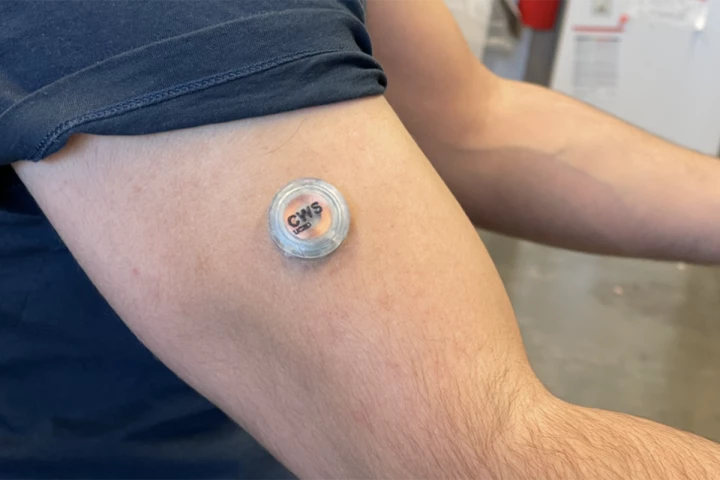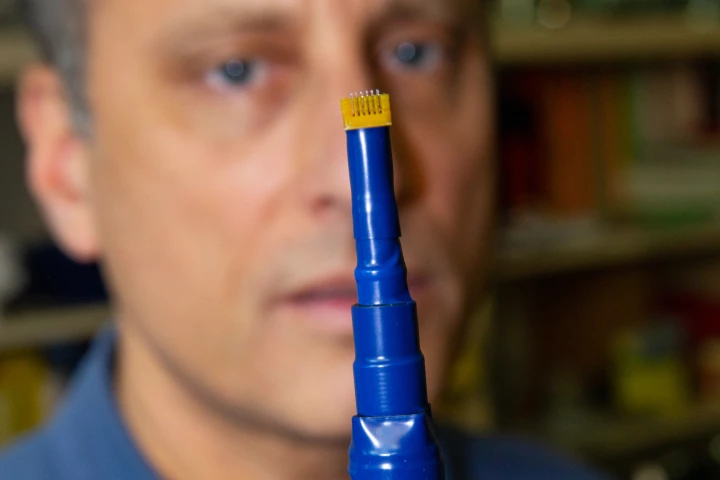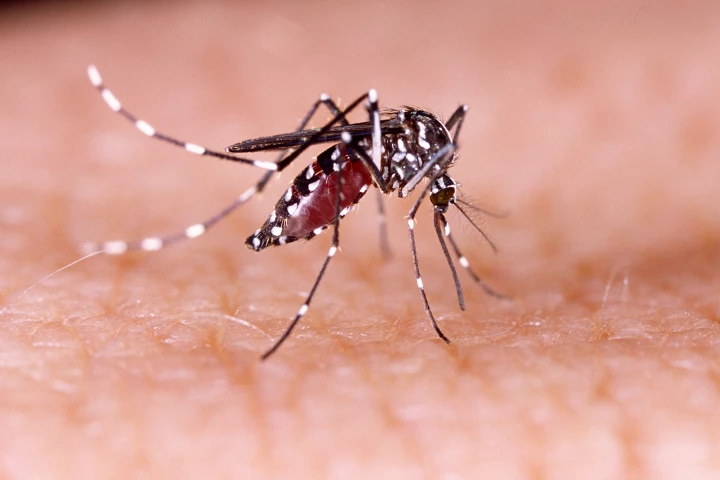Microneedles
-
While we've already seen skin-worn patches that can detect individual substances in the bloodstream, a new one goes considerably further. It simultaneously measures glucose, alcohol and lactate, and could have multiple applications.
-
Peanut allergies can be very serious, potentially resulting in life-threatening anaphylaxis. There could be new hope for eliminating such allergies, however, thanks to the use of peanut-packin' microneedles.
-
Although electroporation technology is very effective at delivering DNA-based vaccines, the required equipment is bulky, complex and expensive. Now, however, scientists have shown that a converted barbecue lighter is capable of doing the job.
-
Chronic wounds such as skin ulcers can be difficult to treat, partially because of antibiotic-resistant "biofilms" that form over the affected tissue. A new type of microneedle patch, however, has been shown to deliver medication through such films.
-
Researchers have developed a new vaccine candidate for dengue virus, a notoriously tricky pathogen to deal with. The new candidate has a number of advantages over existing treatments, with tests on mice using microneedle patches proving promising.
-
Microneedle patches already show a great deal of promise as a painless alternative to hypodermic needles. A new one, however, could find use as a more effective means of treating serious bacterial infections of the skin.
-
Nobody likes needles, but they’re a necessary evil. Microneedle patches are emerging as a painless alternative, and now researchers in Hong Kong have developed a new version of the tech that’s made of ice, for easier manufacture and use.
-
Nobody likes needles – at best they’re an unpleasant means to an important end. Microneedle patches could be a painless alternative, and now researchers have developed a way to use them to detect biomarkers at much lower levels without drawing blood.
-
Engineers at Rice University have designed a new bandage-like microneedle device that could greatly improve access to malaria testing, with the ability to detect key markers of the disease without drawing any blood at all.
-
We've heard about microneedle patches before, and we've also heard about cheap, disposable paper biomedical testing kits. Japanese scientists have now combined the two, in a paper-backed microneedle patch that measures blood glucose levels.
-
We've already heard about so-called "microneedle patches" that are used for the painless and sustained release of medication through the skin. Now, MIT scientists have adapted the technology for the detection of spoiled food.
-
Stem cells are powerful tools that could one day unlock new frontiers in regenerative medicine. Now, a new study has shown that a certain type of stem cell can be delivered into injured tissues with dissolvable microneedles, to heal wounds.
Load More











